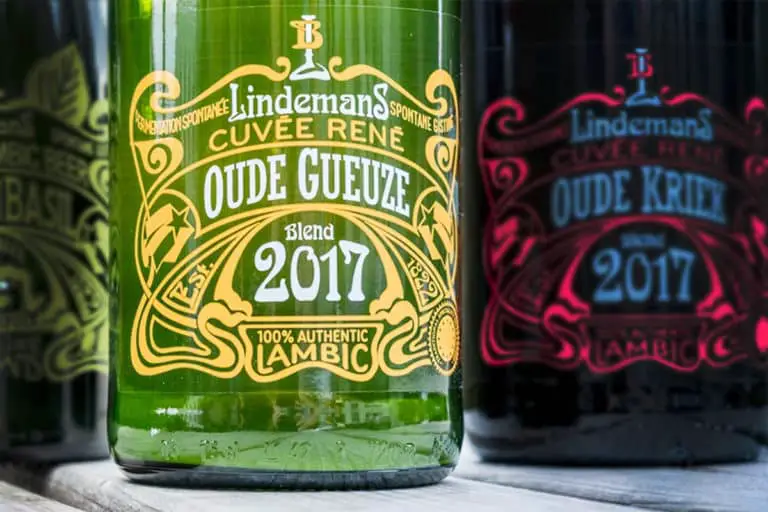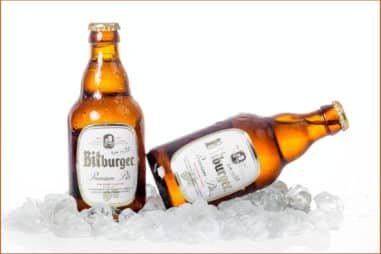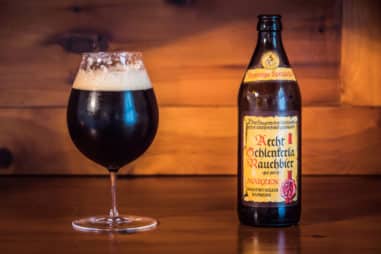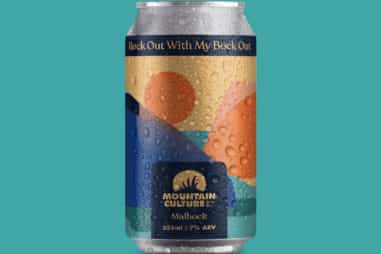It is aged in oak barrels for an extended amount of time. And is curiously stored in champagne bottles, of all places.
Unfortunately, Gueuze is a dying beer style with all its retiring brewers. Fortunately, the U.S. craft industry has expressed interest in these kinds of beers. You will begin to understand the source of this interest here.
Where Did Gueuze Originate?
Gueuze originated from the picturesque Pajottenland. A land of gently rolling hills between the rivers Dender and Zenne.
Because of this place’s unique microorganism, it is not easy to find nor produce this beer anywhere else. After all, Gueuze is the handiwork of microflora in as much as it is the Belgians.
How Do You Pronounce Gueuze?
If you want to make your life simple, say “goose.” Unfortunately, Gueuze is so complex that it extends to its pronunciation. There are only so many ways you can twist your tongue like a Dutchman or Frenchman.
The name itself has two common spellings: “geuze” and “gueuze.” The former is used by the Dutch, the latter by the French. Attempt to pronounce “geuze” like “hewj.” And pronounce “gueuze” like “g’eww-zz”.
If you really want to get it right, there are audio pronunciation files floating online. But that might not be enough to wrap your head around. Do yourself a favor and use “goose.”
Is Gueuze a Lambic?
Lambic beer has several styles to choose from, and one of them is Gueuze. Gueuze is definitively prepared by mixing Lambics of different ages. The common mix would be a one-year-old Lambic blended with a two and three-year-old Lambic.
If you want to get all philosophical, “the Gueuze is greater than the sum of its Lambics.”
What Is the Difference Between Lambic and Gueuze?
From a technical perspective, Lambic beers are not blended. Conversely, a Gueuze must come from blending Lambics. There are no two ways about it.
All in all, Gueuze beers have the properties of the individual Lambic beers involved. But somewhere along the road of blending and later aging, new characteristics pop up. This creates a new, oftentimes unique flavor profile.
Is Gose the Same as Geuze?
You should not mistake a Gose for a Geuze. Here are some quick details that should help you with the distinction:
| Details | Gose | Geuze |
| Country of Origin | Germany | Belgium |
| Taste | Subtle Tartness | Accent on Tartness |
| Added Spices | Coriander and Salt | No Added Spices |
| Unit of Fermentation Time | Weeks | Years |
| Fermenting Agent | Specific Defined Yeast and Bacteria are Pitched | Wild Yeast and Bacteria
Naturally Introduced |
Is Gueuze a Lager?
If you are a Lager lover, don’t be sad to find out that Gueuze is not Lager. Gueuze belongs to a different class of beers called Sour beers. Moreover, Lagers use specific yeasts while Gueuzes rely on microorganisms in the environment.
In terms of recognizable flavors from Lager. You will not taste the same level of hoppy with Gueuze because of the use of aged hops. Aged hops bring a flavor that complements the wild yeast, and has little to no bitterness.
How to Store Gueuze
Storing Lambics and wines apply to Gueuze beer. It is a beer that has been conventionally stored in champagne bottles. A common approach is to lay bottles on their side. Here is a list of benefits you would gain doing so:
- Yeast settles on one side of the bottle, which enables ease of pouring.
- A better spread of yeast promotes more efficient fermentation.
- Maintain cork moisture to keep it expanded for a good seal. You would not want this hard-to-get product leak.
Like everything else, brewers have their own opinions on this matter. Some brewers specify vertically storing their beers. Therefore, you should seek advice from a vendor near you for brewer recommendations.
How Long Can You Age Gueuze?
Would you believe it if you were told rumors of bottles past 100 years that were opened and drinkable? Rumors aside, aging Gueuze beers take anywhere from 1 year to 15 years. A common blend would be a one-year plus two-year plus three-year Lambic.
How Big Is a Gueuze?
The use of champagne bottles 375 to 750ml (12 ¾ or 25 ¼ US fl oz) is a tradition for Gueuze. The pressurization of Gueuze compares to champagne so you would need strong bottles.
There are many Belgian legends that claim the origin of the said convention. One of these legends was during the time champagne was popular. A brewer intended to piggyback on champagne’s publicity. He put his beer inside the same bottles and corks, then added some sugar for fermenting. This apparently became a successful stunt, which lives on to this day.
How to Make Gueuze?
Making Gueuze is not something that should be taken lightly. As Gueuze takes quite a while to ferment so you will need some serious patience. And the fact that you are dealing with wild microflora, there is no reasonable way to know what you are going to get.
Since Gueuze is a blend of three Lambics, you should make one using the standard established by HORAL (High Council for Traditional Lambic Beers).
What is Méthode Traditionnelle?
Méthode Traditionnelle (MT) focuses on the technique and tradition of Belgian Lambic and Gueuze outside of Brussels and Pajottenland. You see, the native brewers are very protective of their traditions and terminology. This is why non-Belgian brewers consulted HORAL to come up with the final form of this standard.
Below is the outline of Méthode Traditionnelle:
- Prepare a grist of 50 to 65 percent Pale or Pilsner-style malted barley, and 35 to 50 percent raw, unmalted wheat.
- Do a turbid mash. Remove at least 15% of the total pre-boil volume of wort and bring to a boil.
- Sparge the mash.
- Boiling / Brewing for three to four hours.
- Add in aged hops at the start of the boil.
- Cool at least 50% of the wort in an open-top coolship. Rectangular pans are functionally the same.
- Cool for 8 to 16 hours.
- After cooling, sanitize your fermentation vessels and equipment.
- Transfer the wort to your fermentation vessels. Oak vessels are a must for this standard. However, you can try alternatives like using oak chips, staves, and extracts in your existing vessel.
- Leave the product to age.
- You may add natural sugars to prime the re-fermentation process once bottled.
- Artificial additives of any kind are forbidden.
- You may add whole fruit or puree if desired.
What is Méthode Traditionnelle – 3 Year Blend?
Now you can finally begin to make your Gueuze after several years of waiting. The “MT – 3 Year Blend” (MT3) is the standard for Gueuze blending.
Below is the outline of MT3:
- Blend un-fruited beers following the MT standard.
- Your blend must include at least 10% of a one-year-old, two-year-old, and three-year-old beer.
- You may not go beyond 60% for one-year-old beer.
- A year is defined as the number of summers the beer aged.
- Before packing, the average age of the blend must be 18 months.
- Place the pack in your cellar for at least four months before release.
What Is the Best Gueuze?
Lindemans: Oude Gueuze Cuvée René. Is arguably the world’s best Gueuze from the World Beer Awards. It was reviewed by accredited beer sommeliers. Don’t get too excited though, it is not easily accessible to folks outside Belgium.
One thing to note is that whoever is on top is not set in stone and changes yearly. Many authoritative sites don’t seem to agree. Even individual customer ratings vary wildly.
You should trust your gut on this one. You should try the beers of the artisan brewers Boon, Cantillon, and 3 Fonteinen. Their Gueuze beers are almost always mentioned in the top 10 picks.








